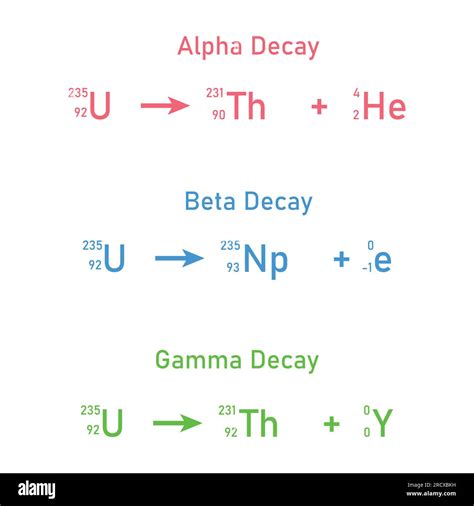Gamma Decay Equation: A Step-by-Step Guide
Gamma decay, a type of radioactive decay, involves the emission of a gamma ray — a high-energy photon — from an excited atomic nucleus. Understanding the equation governing this process is crucial for various applications in nuclear physics and related fields. This guide will walk you through understanding and applying the gamma decay equation.
Understanding the Process of Gamma Decay
Before diving into the equation, let's grasp the fundamentals. Gamma decay occurs when a nucleus is in an excited state (possessing excess energy). To reach a more stable, lower-energy state, the nucleus releases this excess energy in the form of a gamma ray. Crucially, gamma decay doesn't change the atomic number (Z) or mass number (A) of the nucleus. It only changes the energy state.
Key takeaway: Gamma decay is essentially the nucleus shedding excess energy.
The Gamma Decay Equation: A Simplified Approach
There isn't a single "gamma decay equation" in the same way there are equations for alpha or beta decay that change the nucleus's composition. Instead, we focus on energy conservation. The equation represents the energy change:
E<sub>initial</sub> = E<sub>final</sub> + E<sub>γ</sub>
Where:
- E<sub>initial</sub>: The initial energy of the excited nucleus.
- E<sub>final</sub>: The final energy of the nucleus after gamma emission.
- E<sub>γ</sub>: The energy of the emitted gamma ray (photon). This is often expressed in MeV (Mega-electron volts).
This equation simply states that the initial energy of the nucleus equals the sum of its final energy plus the energy carried away by the gamma ray.
Determining the Gamma Ray Energy
To calculate the energy of the emitted gamma ray (E<sub>γ</sub>), you need to know the energy difference between the initial and final nuclear states. This information is often obtained experimentally using techniques like gamma-ray spectroscopy. The equation then becomes:
E<sub>γ</sub> = E<sub>initial</sub> - E<sub>final</sub>
Example: If an excited nucleus has an initial energy of 5 MeV and reaches a final state with an energy of 2 MeV after gamma decay, the energy of the emitted gamma ray would be 3 MeV (5 MeV - 2 MeV = 3 MeV).
Factors Affecting Gamma Decay
While the basic equation is straightforward, several factors influence gamma decay:
- Nuclear Structure: The specific arrangement of protons and neutrons within the nucleus impacts the energy levels and thus the energy of the emitted gamma rays.
- Selection Rules: Certain transitions between nuclear energy levels are more probable than others, governed by selection rules based on quantum mechanics. This influences the likelihood of specific gamma ray emissions.
- Internal Conversion: Sometimes, instead of emitting a gamma ray, the excess energy is transferred to an inner shell electron, causing its ejection. This is known as internal conversion.
Applications of Gamma Decay
Understanding gamma decay is critical in various applications, including:
- Nuclear Medicine: Gamma rays are used in diagnostic imaging (e.g., SPECT scans) and radiotherapy.
- Industrial Applications: Gamma rays are used for sterilization and gauging material thickness.
- Nuclear Physics Research: Studying gamma decay helps scientists understand nuclear structure and interactions.
Conclusion: Mastering Gamma Decay Calculations
While there isn't a single, complex equation for gamma decay, understanding the energy conservation principle is key. By grasping the relationship between the initial and final nuclear energies and the energy of the emitted gamma ray, you can effectively analyze and utilize information from gamma decay processes. Remember to consult relevant nuclear data tables or experimental results to obtain the necessary energy levels for accurate calculations.
